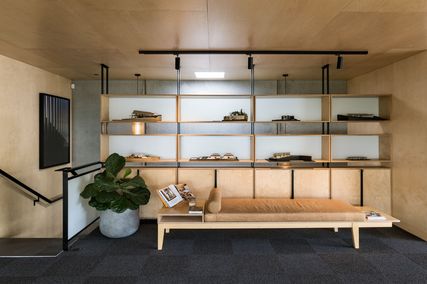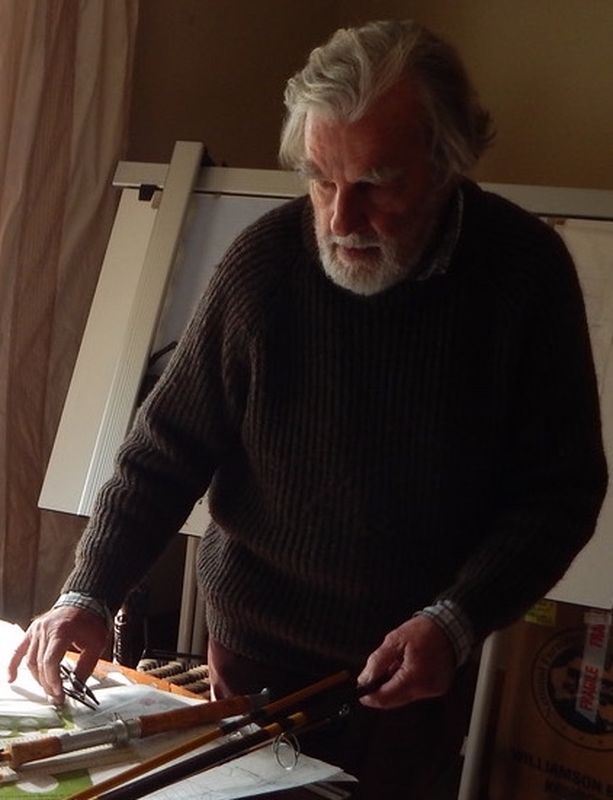So sad about Peter Myers’ death – such a brilliant mind, such an ethical man, such an acute and drily-humoured observer of the passing scene. He always saw behind things, whether it was an underlying idea in architecture or art, or characters on the day-to-day stage of life – rogues or heroes, thugs or cops, especially those like detective inspector Ray “Gunner” Kelly or detective sergeant Frank “Bumper” Farrell of New South Wales Police. Or well-known horse trainer Bart Cummings with his brushback hairdo, looking like he was doing 60 knots in a stiff westerly, mixing with the fans after winning yet another Melbourne Cup. How we both used to laugh while opening fresh plump Sydney rock oysters and drinking ice-cold Coopers. You see, Peter had the common touch and was a lover of the everyday. And yet … and yet, behind those craggy eyebrows lurked an intellect as sharp and as polished as the sushi master’s hand-forged knife breaking down the bluefin belly.
Peter William Bennett Myers occupied many worlds. I know little about his childhood, except that he loved his mother Helena for her strength and respected his father William for his intelligence and bravery in his role as a reconnaissance aerial photographer in World War II. Peter went to Mosman High School, while his sister Judy attended North Sydney Girls High. He obtained his Leaving Certificate from North Sydney Technical High School and graduated in architecture from the University of New South Wales. Having been employed by some of the best practices in Sydney, he applied for work with Jørn Utzon as the shells of the Sydney Opera House opened like flowers before entranced citizens. I joined Utzon’s studio at the same time and so began our friendship, which lasted for six decades.
By the time the conservative state government’s disgraceful behavior forced Utzon’s departure from the job and the country, his brilliance had changed not only the face of the city but also the direction of our lives. It drew us very close. The injustices suffered by Utzon prompted Peter, and the rest of us who had had the pleasure of working with the Great Dane, to flee the country, refusing to work for the architectural assassins.
Returning to Australia in about 1970, after working in London with well-known architect Patrick Hodgkinson on a radical housing project known as the Brunswick Centre, Peter set up as a sole practitioner. In a piece that is quintessentially Myers, titled “Brunswick Centre” and published by Drawing Matter, he brilliantly describes a series of incidents around Hodgkinson’s project. Over his years in private practice and through teaching, Peter’s serious essays, commentaries, criticisms and designs were published in many different spheres. They are difficult to track down. But their resonance is unshakeable. They include his views on the first city of Sydney being the monumental platform middens of the Cadigal people, destroyed by us and fired into lime for the walls of the colony; his description of bream being lured in close by shells containing remnants of flesh as the earliest fish farming; his incisive study of 1920s Blacktown and how the gift of two eucalypt seedlings to each new household in the first subdivision gave rise to today’s vast tree canopy. The threat to this canopy from the permissible granny-flat policy seeded Peter’s thinking about the replacement of existing outmoded bungalows with a medium-density system occupying their footprints, and ties in to his Third City proposal.
Peter made many provocative suggestions, including the brilliant photographic essay on Top End Indigenous camp housing and social structure called “Room to Move,” which was part of a submission to the Senate Committee. His designs included the vaulted Ngaripuluwamigi Nguiu “Keeping Place” for the Tiwi people on Bathurst Island; a beautiful resuscitation of the octagonal woolshed near Uralla, New South Wales; and the Walker Street social housing in Waterloo. He was responsible for the exhibition of Utzon’s proposed approach to the Opera House, which went from the city laneways through Circular Quay and around the waterfront to the House. (The government told Utzon to mind his own business by sticking to his site!) What a body of work Myers has made. And that is but a tithe of it. It would be remiss not to make a suggestion at this point – that we must make an inventory of these precious works and publish them with a sense of continuity, with all the personal stories interwoven. And there are many.
Peter was a great teacher. His students loved him. His cultural knowledge was such that he was able to teach by precedents that went back through centuries – and this, of course, also informed his small, far-reaching and fine-grained practice. He was a truculent character who stood for no nonsense. He enjoyed his privacy and didn’t always let friends know when he moved (which was often). For the last 20 or so years, he disappeared into the South Island of Aotearoa with Catherine, his dear companion, who finally brought him back to Sydney when his health was failing. He died quietly with Catherine by his side and with the constant companionship of his sons, Hugh and Ralph. His end in the city to which he belonged was harboured in love and family recalibration. How we will miss him.
—Richard Leplastrier, architect

















